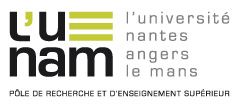Tiny comets under the sea
Résumé
Phytoplankton produce organic matter in the sunlit upper ocean, which forms particles of “marine snow” that sink and transfer carbon from the surface to the deep ocean. These particles sustain a vast carbon reservoir and are consumed to provide energy to ecosystems in the deep sea (1). Deciphering what controls carbon transfer by marine snow has been a central question in oceanography since the 1980s. However, the formation, sinking, and consumption of this particulate matter involve many physical, chemical, and biological processes. Thus, the overall impact of sinking particles on the ocean’s carbon cycle remains highly uncertain and poorly understood (2). On page 166 of this issue, Chajwa et al. (3) report mucus “comet tails” of marine snow that substantially affect the sinking speed and transfer of carbon in the upper ocean. These observations provide new insights into how the composition of marine particles alters ocean ecology and biogeochemistry.
Domaines
Océanographie| Origine | Fichiers produits par l'(les) auteur(s) |
|---|---|
| licence |



